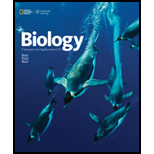
Concept explainers
Introduction:
Muscle, connective, epithelial, and nervous tissue are the four basic types of animal tissue: These tissues are joined together in structural units to perform a common function of composing different organs.
Answer to Problem 1SQ
Correct answer:
Epithelial tissues are sheetlike with one free surface. Hence, the correct answer is option a.
Explanation of Solution
Reason for correct answer:
Option a. is given as, “Epithelial.”
Epithelial tissues are associated with a sheet-like group of cells. The epithelial tissues cover the external body areas and internal cavities. They produce substances that help them to attach with the connective tissue beneath them and form the basement membrane. Besides this, they are freely exposed to the environment on the other side.
Reason for incorrect answer:
Option b. is given as, “Connective.”
The connective tissues are not so tightly packed as epithelial tissues. Hence, option b. is incorrect.
Option c. is given as, “Nervous.”
Nervous tissue act as the messenger in the nervous system. They do not have any free surface. Hence, option c. is incorrect.
Option d. is given as, “Muscle.”
The muscle tissues are present inside the body with no free surface. Hence, option d. is incorrect.
Hence, the options b., c., and d. are incorrect.
The sheetlike tissues with one free surface are known as epithelial tissues. Thus, the correct option is a.
Want to see more full solutions like this?
Chapter 28 Solutions
Biology: Concepts and Applications (MindTap Course List)
- What is behavioral adaptarrow_forward22. Which of the following mutant proteins is expected to have a dominant negative effect when over- expressed in normal cells? a. mutant PI3-kinase that lacks the SH2 domain but retains the kinase function b. mutant Grb2 protein that cannot bind to RTK c. mutant RTK that lacks the extracellular domain d. mutant PDK that has the PH domain but lost the kinase function e. all of the abovearrow_forwardWhat is the label ?arrow_forward
- Can you described the image? Can you explain the question as well their answer and how to get to an answer to an problem like this?arrow_forwardglg 112 mid unit assignment Identifying melting processesarrow_forwardGive only the mode of inheritance consistent with all three pedigrees and only two reasons that support this, nothing more, (it shouldn't take too long)arrow_forward
- Oarrow_forwardDescribe the principle of homeostasis.arrow_forwardExplain how the hormones of the glands listed below travel around the body to target organs and tissues : Pituitary gland Hypothalamus Thyroid Parathyroid Adrenal Pineal Pancreas(islets of langerhans) Gonads (testes and ovaries) Placentaarrow_forward

 Biology (MindTap Course List)BiologyISBN:9781337392938Author:Eldra Solomon, Charles Martin, Diana W. Martin, Linda R. BergPublisher:Cengage Learning
Biology (MindTap Course List)BiologyISBN:9781337392938Author:Eldra Solomon, Charles Martin, Diana W. Martin, Linda R. BergPublisher:Cengage Learning Biology: The Unity and Diversity of Life (MindTap...BiologyISBN:9781305073951Author:Cecie Starr, Ralph Taggart, Christine Evers, Lisa StarrPublisher:Cengage Learning
Biology: The Unity and Diversity of Life (MindTap...BiologyISBN:9781305073951Author:Cecie Starr, Ralph Taggart, Christine Evers, Lisa StarrPublisher:Cengage Learning





